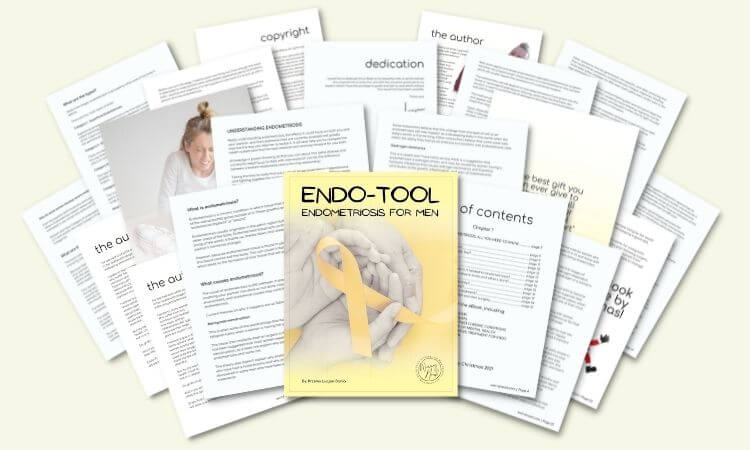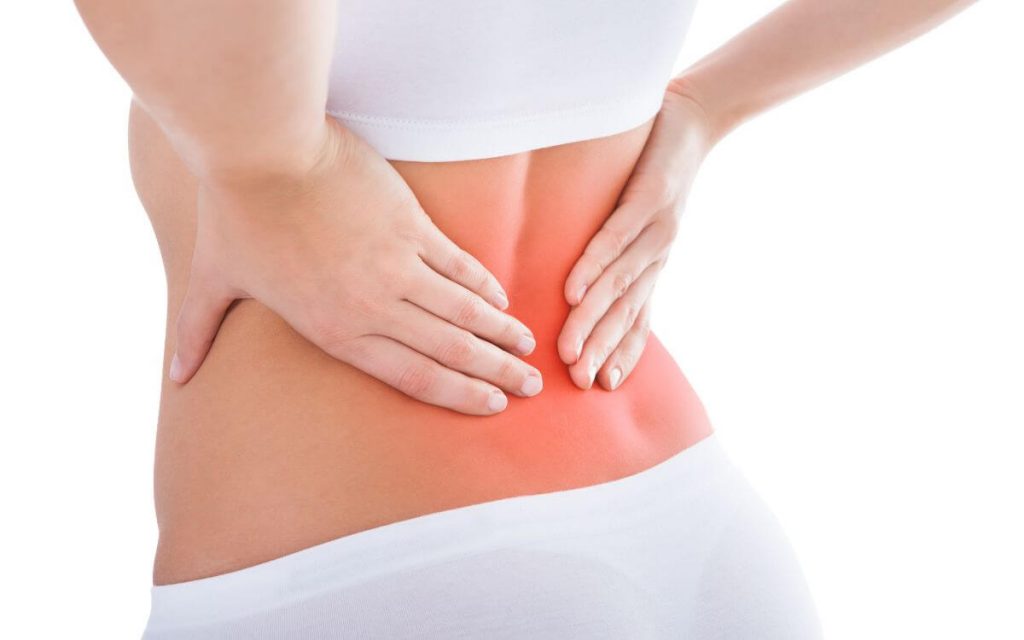The link between endometriosis and fibromyalgia pain.
Due to personal reasons, I haven’t written a blog post for a long while… It’s been 3 months since my last article, But I’m back and decided to write for both – endometriosis and fibromyalgia community. It is only fair since my wife suffers from both conditions, that I explore the painful connection – the link between endometriosis and fibromyalgia pain.
Living with chronic pain can be debilitating and force people to significantly alter their lives.
Endometriosis and fibromyalgia are two conditions that cause chronic pain for millions of people worldwide. These conditions have gained increasing attention and recognition in recent years, as more research has been conducted to understand the underlying causes and potential treatments.
So what’s the connection?
Endometriosis is a condition where tissue resembling the uterine lining grows outside the uterus. Fibromyalgia involves widespread pain and tenderness. Studies suggest a possible link between them. Women with endometriosis may be at higher risk of developing fibromyalgia due to shared inflammatory and hormonal factors.
Further research is needed, however, based on my wife’s experience, she developed fibromyalgia the following year after her stage 4 endometriosis diagnosis.
Let’s explore more…
- Definition of endometriosis and fibromyalgia pain.
- Understanding endometriosis pain.
- Understanding fibromyalgia pain.
- More on the connection between endometriosis and fibromyalgia pain.
- Treatment options for managing both types of chronic pain.
- Summary of the link between endometriosis and fibromyalgia pain.
Definition of endometriosis and fibromyalgia pain.
Endometriosis is a painful condition that occurs when the lining similar to one of the uterus (the endometrium) grows outside of the uterus. This can lead to inflammation, scarring, adhesions, and pain in various parts of the body such as the abdomen, pelvis, back, or legs. The pain can be severe during menstruation or sexual activity.
Fibromyalgia is a disorder characterized by widespread musculoskeletal pain, fatigue, sleep disturbances, and cognitive difficulties. The exact cause is unknown but it is believed to be related to abnormal processing of pain signals in the brain or spinal cord.
Both endometriosis and fibromyalgia are chronic conditions that can significantly affect one’s quality of life. They have no cure yet but there are treatments available that can help manage the symptoms.
Prevalence of endometriosis and fibromyalgia pain.
Endometriosis affects approximately 10% of women during their reproductive years which is about 176 million women worldwide according to estimates from the World Endometriosis Society (WES). It usually develops between ages 25-40 but may occur earlier or later in life as well.
Fibromyalgia affects about 2-8% of adults globally with higher rates among women than men according to data from the National Fibromyalgia Association (NFA). It usually develops between ages 30-50 but can occur at any age.
Both conditions are often underdiagnosed and misdiagnosed due to similarities in symptoms with other conditions. It is important for patients to seek medical attention if they suspect they may have either condition.
Importance of understanding the connection between endometriosis and fibromyalgia pain.
Recent studies have found a strong link between endometriosis and fibromyalgia pain. Women with endometriosis were more likely to have fibromyalgia than women without endometriosis according to a study published in the Journal of Obstetrics and Gynaecology Research. Understanding this connection is crucial for healthcare providers as it can lead to better diagnosis, treatment, and management of both conditions.
Patients who have both conditions require a holistic approach that considers the impact of one condition on the other. This can involve multidisciplinary care that includes gynecologists, rheumatologists, pain specialists, and mental health professionals.
Endometriosis and fibromyalgia are two chronic conditions that cause debilitating pain for millions worldwide. They are often underdiagnosed and misdiagnosed but recent research has shed light on their connection.
Understanding this link is crucial for healthcare providers as it can lead to better diagnosis, treatment, and management of both conditions.
In the following sections, we will delve deeper into each condition’s definition, prevalence, causes of pain, commonalities in symptoms between the two conditions as well as treatment options available for managing chronic pain from endometriosis or fibromyalgia.

Understanding endometriosis pain.
We know that endometriosis is a complex medical condition where tissue similar to the lining inside the uterus, grows outside of it.
This abnormal growth can lead to inflammation, pain, and scarring, particularly around the pelvic region, ovaries, fallopian tubes, and other adjacent organs.
While the primary manifestation of endometriosis is pelvic pain, especially during menstruation or intercourse, its effects can radiate to the lower back or legs. Some women also experience pain during bowel movements or urination, irregular or heavy periods, fatigue, and in some cases, infertility.
Despite its prevalence, the precise cause of endometriosis is not fully understood.
- Some theories suggest retrograde menstruation, where menstrual blood containing endometrial cells flows back through the fallopian tubes and implants in the pelvis.
- Others hypothesize the transportation of endometrial cells via the bloodstream or lymphatic system to different parts of the body.
- Hormonal factors, particularly the role of estrogen, also appear to exacerbate the condition by promoting the growth and proliferation of misplaced tissue.
- Familial patterns, early menstruation onset, prolonged menstrual cycles, and having a low body mass index have all been identified as potential risk factors.
Understanding endometriosis pain is essential as it affects numerous women worldwide. Its chronic nature and varying intensity present challenges, both in diagnosis and management.
Symptoms of endometriosis pain.
The most common symptom of endometriosis pain is pelvic pain which typically occurs during menstruation or sexual intercourse. This pain can range from mild to severe and may extend into the lower back or legs.
Other symptoms may include painful bowel movements or urination during menstruation, heavy or irregular periods, fatigue, and infertility.
Causes of endometriosis pain.
To tell you the truth, the exact cause of endometriosis remains unknown but there are several theories that suggest it may result from a combination of genetic and environmental factors.
One theory suggests that during menstruation some menstrual blood flows backward through the fallopian tubes into the pelvis instead of out through the vaginal canal leading to implantation and growth on other parts such as ovaries and bowel walls.
Another theory proposes that endometrial cells are transported through blood vessels or lymphatic systems throughout your body settling on tissues they grow upon leading to abnormal growths.
Additionally, hormonal factors play a role in endometrial tissue growth by promoting cell reproduction within this misplaced tissue leading to inflammation and scarring which leads to more chronic pain over time if left untreated.
Other risk factors for developing endometriosis include family history (endometriosis can run in families), early onset of menstruation, frequent and long-lasting periods, and a low body mass index.
The pain experienced by individuals with endometriosis is often chronic, with pain levels varying widely from person to person. There are several theories as to what causes it, but no definitive answers yet.
If you want to learn more about endometriosis, I wrote an “Endo-Tool, Endometriosis for Men” e-Book.
You can get the 1st Chapter of the e-Book for FREE, and if you like it, you’ll get a Whopping 33% Discount on the Whole Book, plus discounts on other helpful tools. You have nothing to lose but a lot to gain!
The first chapter alone contains all the comprehensive medical knowledge about endometriosis, including:
- What is endometriosis?
- What are the symptoms?
- What causes endometriosis?
- What does endometriosis look like?
- What are the stages?
- What are the types?
- What is adenomyosis and how is it related to endometriosis?
- Why do some women develop severe endo and others don’t?
- Does endometriosis cause infertility?
- How is endometriosis diagnosed?
- Do types and stages affect the treatment?
- Recurrence of endometriosis after excision surgery.
FREE Chapter of “Endo-Tool”
Endometriosis e-Book for Men

Understanding fibromyalgia pain.
Fibromyalgia is a prevalent chronic pain disorder affecting millions globally. Characterized by widespread musculoskeletal pain, heightened sensitivity to touch, and fatigue, the condition remains enigmatic despite its recognition in the early 1990s.
The precise cause is elusive, but researchers propose it might stem from central nervous system abnormalities, leading to an exaggerated pain response.
Symptoms range from widespread pain to fatigue, sleep issues, headaches, and even digestive and psychological disturbances. Described as a burning or stabbing sensation, the pain typically manifests in areas like the neck, shoulders, and back.
Although the causes are not definitive, potential triggers include genetics, infections, trauma, and neurotransmitter abnormalities.
Women, those with a family history, and individuals with specific medical conditions may be at greater risk. Despite no cure, management methods such as medication, lifestyle adjustments, alternative therapies, and psychological support can help patients navigate fibromyalgia and maintain a satisfactory quality of life.
Symptoms of fibromyalgia pain.
The symptoms of fibromyalgia can vary from person to person. Some people may experience mild discomfort while others may have severe pain that interferes with their daily activities.
Common symptoms include:
- Widespread muscle and joint pain
- Fatigue
- Sleep disturbances
- Headaches
- Irritable Bowel Syndrome (IBS)
- Depression and anxiety
Fibromyalgia patients often describe their pain as a burning or stabbing sensation, accompanied by stiffness and tenderness in specific areas such as the neck, shoulders, back, hips, arms, or legs.
Causes of fibromyalgia pain.
The causes of fibromyalgia are not well understood but research suggests that it could be due to:
- Genetics: There may be genetic factors involved in the development of fibromyalgia.
- Infections: Certain infections can trigger or worsen fibromyalgia symptoms. – Trauma: Physical or emotional trauma has been associated with the onset of fibromyalgia.
- Abnormalities in neurotransmitters: Neurotransmitters are chemicals used by nerve cells to communicate with each other. Abnormal levels of neurotransmitters such as serotonin, dopamine, and norepinephrine have been linked to fibromyalgia.
There are also several risk factors that may increase your chances of developing fibromyalgia. These include being a woman, having a family history of the disease, experiencing physical or emotional trauma, and having certain medical conditions such as rheumatoid arthritis or lupus.
Living with fibromyalgia pain.
Fibromyalgia can be a debilitating condition that negatively impacts the quality of life of those who suffer from it. However, there are ways to manage the symptoms and improve overall health and well-being:
- Medications: Certain medications can help alleviate pain and other symptoms associated with fibromyalgia.
- Lifestyle changes: Eating healthy foods, exercising regularly, and practicing relaxation techniques such as yoga or meditation can help reduce stress levels which may worsen pain.
- Alternative therapies: Acupuncture and massage therapy have been shown to be helpful in managing fibromyalgia pain.
- Psychotherapy: Seeking therapy or counseling can help you cope with the psychological aspects of living with a chronic condition like fibromyalgia.
There is currently no cure for fibromyalgia but by working closely with healthcare professionals, patients can develop an individualized treatment plan tailored to their specific needs. With proper management techniques in place, it is possible for individuals suffering from fibromyalgia pain to lead fulfilling lives.
If you want to learn more about fibromyalgia, I wrote a “Fibromyalgia for Caring Partners” e-Book.
You can get the 3 First Chapters of the e-Book for FREE, and if you like it, you’ll get a Whopping 33% Discount on the Whole Book, plus discounts on other helpful tools. You have nothing to lose but a lot to gain.
These chapters alone explain how to accept the new normal, and understand fibromyalgia, and its diagnosis. They include:
- The new you.
- The new her.
- The new reality.
- Introduction to fibromyalgia.
- What is fibromyalgia?
- The early days.
- When you first realize something is wrong.
- Spotting the signs that something is wrong.
- Coming to terms with a chronic illness.
- The role of partner in fibromyalgia.
- The process of getting diagnosed.
Get Your 3 FREE Chapters!
Fibromyalgia for Caring Men

More on the connection between endometriosis and fibromyalgia pain.
Endometriosis and fibromyalgia are two chronic pain conditions that affect millions of people, primarily women. Although they are vastly different in terms of root causes and symptoms, recent research has shown a clear link between the two conditions.
Both endometriosis and fibromyalgia are associated with inflammation in the body.
Inflammation is a natural response to injury or infection, but when it becomes chronic, it can cause a range of health problems. Inflammation is also linked to pain, which is why both endometriosis and fibromyalgia can result in significant discomfort for those who suffer from them.
Research findings on the link between endometriosis and fibromyalgia pain.
A growing body of research suggests that there may be a connection between endometriosis and fibromyalgia.
A study published in the Journal of Obstetrics and Gynaecology Research found that women with endometriosis were more likely to also have fibromyalgia compared to women without endometriosis.
Another study published in the Journal of Women’s Health found that women with endometriosis were also more likely to experience widespread pain (a hallmark symptom of fibromyalgia) than women without endometriosis.
While these studies do not establish a causal relationship between the two conditions, they suggest that there may be some underlying factor connecting them.
One possibility is that both conditions share common genetic predispositions or environmental triggers that increase inflammation throughout the body.
Commonalities in symptoms between the two conditions.
In addition to research findings suggesting an association between endometriosis and fibromyalgia, there are also striking similarities between their symptoms. Both conditions can cause chronic pain, fatigue, and cognitive impairment.
Women with endometriosis may also experience painful intercourse, heavy menstrual bleeding, and infertility.
Fibromyalgia sufferers often have tender points throughout their body and may experience a range of other symptoms such as headaches and irritable bowel syndrome.
Furthermore, both conditions are notoriously difficult to diagnose due to the subjective nature of their symptoms. Women with endometriosis may go years without receiving an accurate diagnosis or effective treatment.
Similarly, fibromyalgia can be misdiagnosed as other conditions, leading to delays in appropriate therapy.
How one condition can exacerbate the other?
One of the most challenging aspects of living with both endometriosis and fibromyalgia is how one condition can exacerbate the other. For instance, women with endometriosis often find that their menstrual cycles trigger flare-ups of fibromyalgia pain.
Conversely, women with fibromyalgia may find that the stress associated with managing a chronic pain condition like endometriosis worsens their fibromyalgia symptoms.
The interplay between these two conditions underscores how complex chronic pain management can be. It is not enough to treat each condition in isolation; rather, a comprehensive approach that addresses both systemic inflammation and localized pain is necessary for effective relief.
While research on the link between endometriosis and fibromyalgia is still emerging, it is clear that there are important connections between these two chronic pain conditions.
Understanding these connections can help patients and healthcare providers collaborate on more effective treatment plans that address both the underlying causes and resultant symptoms of each condition.

Treatment options for managing both types of chronic pain.
When it comes to the link between endometriosis and fibromyalgia pain, treatment for chronic pain, whether endometriosis, fibromyalgia, or other conditions, often combines pharmacological interventions, physical therapy, lifestyle changes, and alternative therapies.
Medications, including pain relievers and anti-inflammatories, are commonly prescribed. Complementary approaches, like acupuncture, massage, and meditation, can also play a vital role in pain management.
Let’s explore it further…
Medications for managing chronic pain from endometriosis and fibromyalgia.
There are a variety of medications available to manage chronic pain from endometriosis or fibromyalgia. Nonsteroidal anti-inflammatory drugs (NSAIDs) such as ibuprofen and aspirin can help alleviate pain associated with endometriosis.
Menstrual pain can be relieved with hormonal contraceptives, such as birth control pills, patches, and intrauterine devices (IUDs).
Additionally, opioids such as codeine and oxycodone may be prescribed by a doctor for severe pain relief. Fibromyalgia is usually treated with medications that target the nervous system.
Antidepressants like duloxetine and milnacipran can help alleviate chronic pain associated with fibromyalgia. Anticonvulsants like pregabalin can also help relieve nerve-related symptoms like burning or tingling sensations.
It’s important to remember that while medication may provide temporary relief from chronic pain, it does not address the root cause of the problem. Furthermore, long-term use of opioids can lead to dependency and addiction which could worsen a person’s overall health condition.
Lifestyle changes to manage chronic pain from endometriosis and fibromyalgia.
Making lifestyle changes is an essential part of managing chronic pain from endometriosis or fibromyalgia.
Stress management techniques like meditation and yoga can help reduce inflammation in the body which contributes to both conditions’ severity. Exercise has also been shown to be effective in managing chronic pain associated with these conditions.
Low-impact activities like swimming, cycling, and walking can help strengthen muscles and relieve stress on joints. It’s best to consult with a doctor before starting any exercise routine to ensure that the exercises are appropriate for one’s specific health conditions.
Eating a healthy and balanced diet can also alleviate symptoms of chronic pain from endometriosis or fibromyalgia.
Diets rich in fruits, vegetables, whole grains, lean protein, and healthy fats are shown to reduce inflammation and lower the risk of developing chronic diseases.
Alternative therapies to manage chronic pain from endometriosis and fibromyalgia.
In addition to traditional medical treatments, alternative therapies have shown promise in managing chronic pain associated with endometriosis or fibromyalgia. Acupuncture is a traditional Chinese therapy that involves inserting needles into specific points of the body.
The therapy aims to restore balance in the body’s energy flow which can help alleviate symptoms like pain and fatigue.
Chiropractic care is another alternative therapy that focuses on treating musculoskeletal problems without surgery or medication. Chiropractors use hands-on techniques such as spinal manipulation to improve joint mobility and relieve pain.
Cognitive behavioral therapy (CBT) is another effective alternative treatment for managing chronic pain associated with fibromyalgia. CBT helps individuals recognize negative thought patterns that contribute to their pain experience and teaches them how to replace these patterns with more positive ones.
Massage therapy may also be an effective treatment option for those with endometriosis or fibromyalgia-related pain. Massages can help decrease muscle tension caused by both conditions’ symptoms while promoting relaxation which could lead to better sleep quality.

Summary of the link between endometriosis and fibromyalgia pain.
So, that sums up the link between endometriosis and fibromyalgia pain…
Endometriosis and fibromyalgia pain are two conditions that can cause chronic pain, with each having distinct symptoms and causes. Endometriosis is a condition where the tissue that normally lines the uterus grows outside of it, leading to painful periods, pain during sex, and infertility.
Fibromyalgia is a condition that causes widespread pain throughout the body, along with fatigue and sleep disturbances. While endometriosis and fibromyalgia are two different conditions, studies have shown there may be a link between them.
One study found that women with endometriosis were more likely to have fibromyalgia compared to women without endometriosis. Additionally, both conditions share similarities in symptoms such as pelvic pain.
Importance of seeking medical attention.
Chronic pain from endometriosis or fibromyalgia can greatly impact daily life and should not be ignored.
Seeking medical attention can lead to diagnosis and treatment options that can help manage symptoms. It is important for those experiencing chronic pain to talk to their healthcare provider about their symptoms and receive proper care.
There are various medications available for managing chronic pain from endometriosis or fibromyalgia such as over-the-counter pain relievers or prescription medications like antidepressants or anticonvulsants.
Lifestyle changes such as regular exercise, stress reduction techniques like yoga or meditation, and dietary changes may also help manage symptoms.
Hope for a better future with more research on these conditions.
While there is still much research needed on both endometriosis and fibromyalgia, there is hope for a better understanding of these conditions in the future. Increased research could lead to improved diagnostic tools for identifying these conditions earlier on in patients, as well as more effective treatment options.
Moreover, raising awareness about chronic pain conditions like endometriosis and fibromyalgia can help reduce the stigma surrounding them, and lead to better support for those who experience them.
As we continue to learn more about these conditions and spread awareness, we can work towards a future where chronic pain is better understood and managed for everyone.
I hope you found it interesting. Please do share a comment of your experiences with the link between endometriosis and fibromyalgia pain below.
Thank you!


About Me
Hi, I’m Lucjan! The reason why I decided to create this blog was my beautiful wife, who experienced a lot of pain in life, but also the lack of information about endometriosis and fibromyalgia for men...
